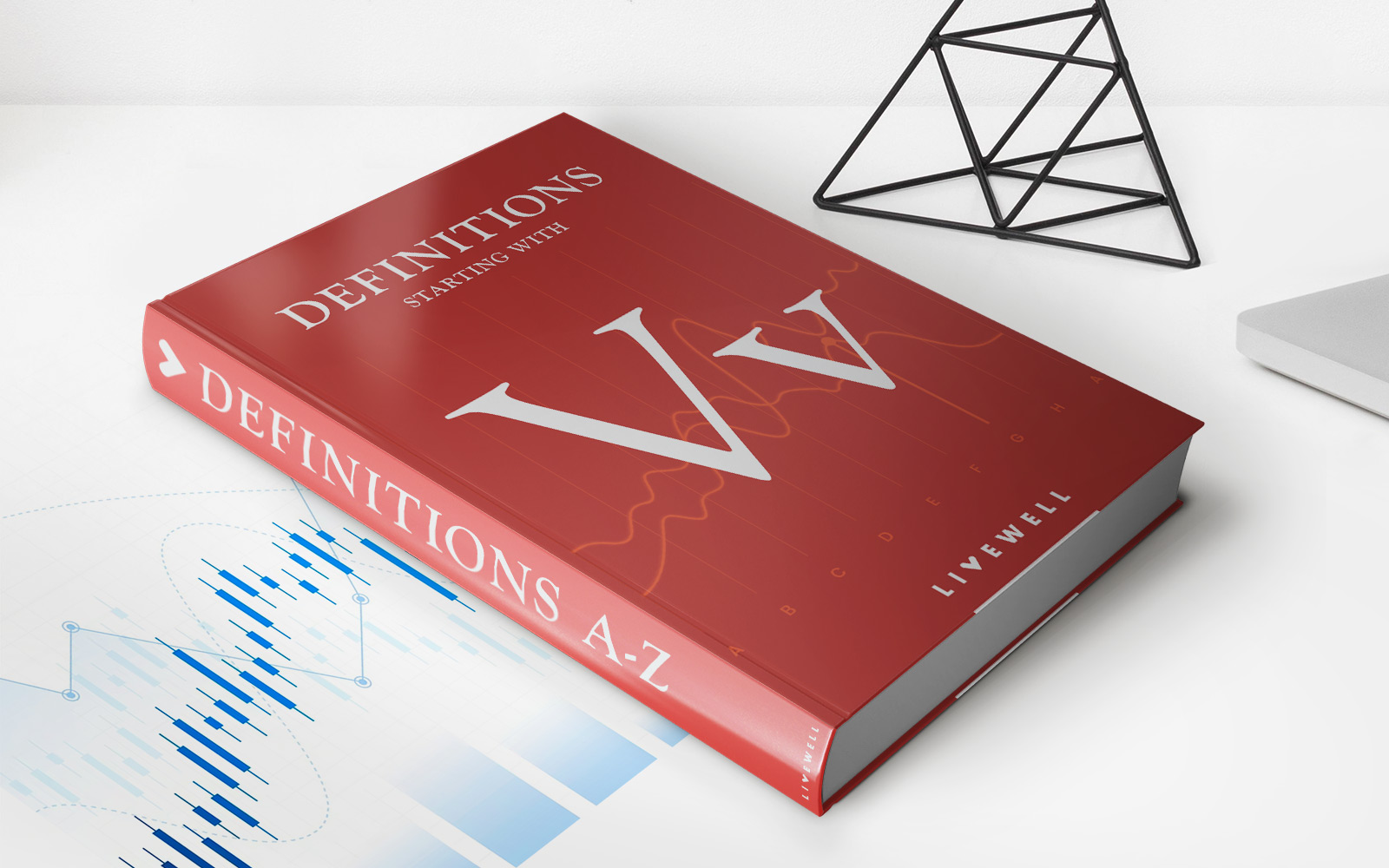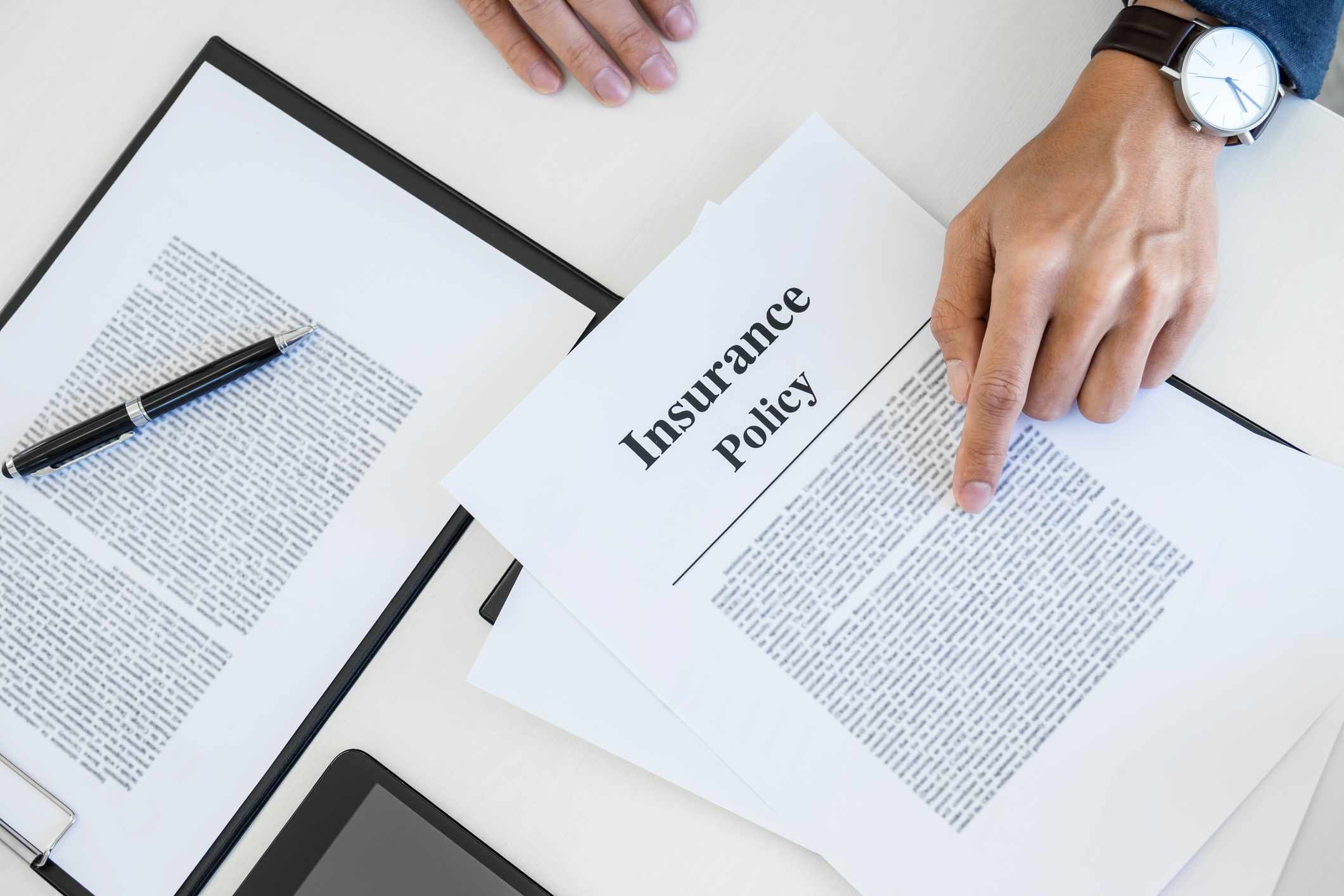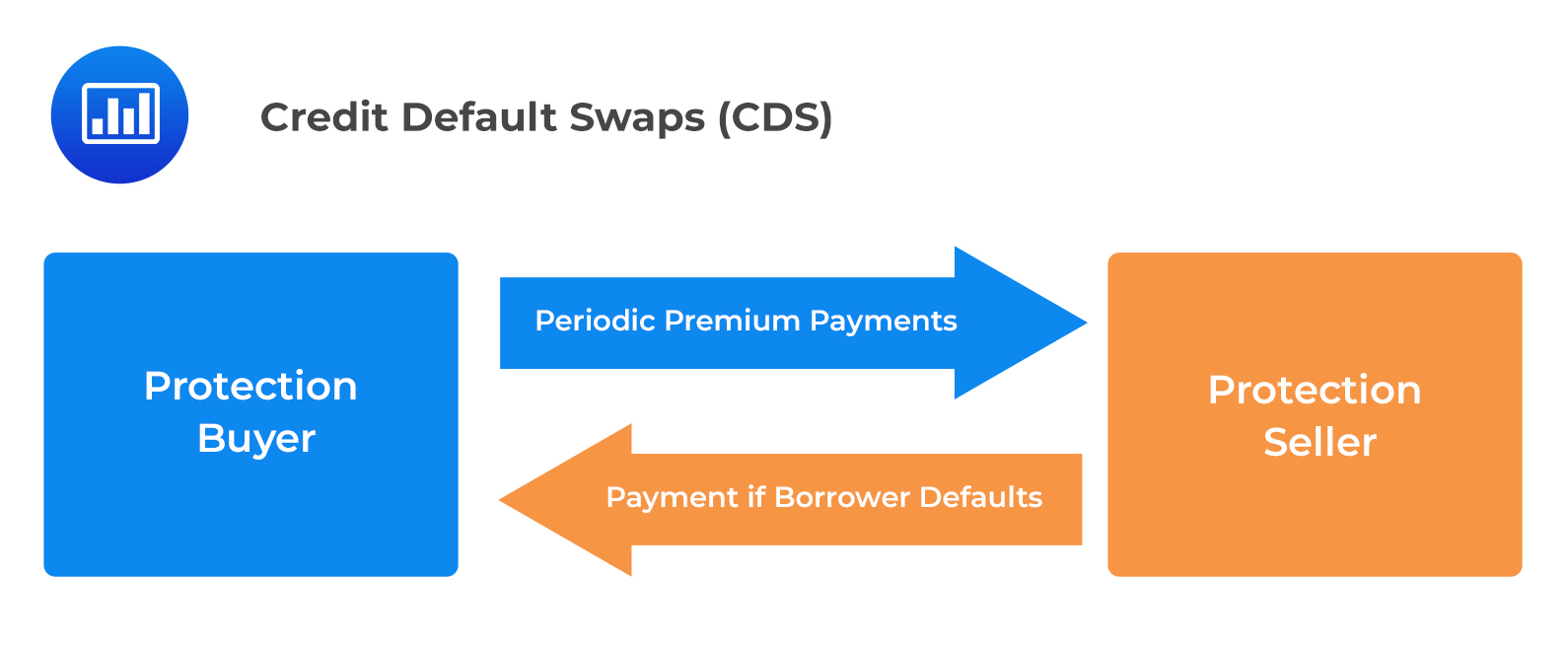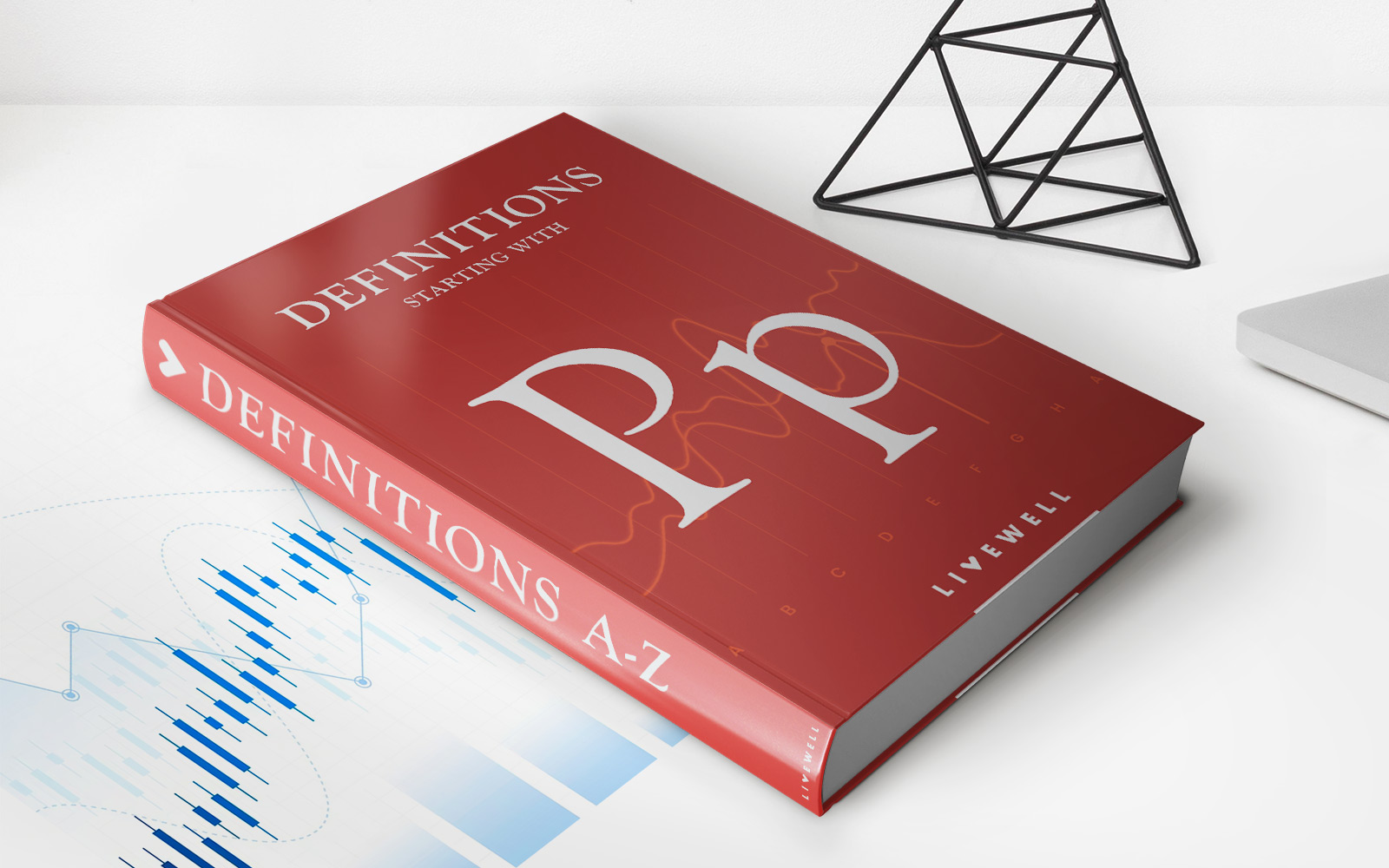Home>Finance>Who Bears The Investment Risk In Variable Life Insurance Products?


Finance
Who Bears The Investment Risk In Variable Life Insurance Products?
Published: October 14, 2023
Who bears the investment risk in variable life insurance products? Learn about the financial aspects and risks associated with these insurance products.
(Many of the links in this article redirect to a specific reviewed product. Your purchase of these products through affiliate links helps to generate commission for LiveWell, at no extra cost. Learn more)
Table of Contents
Introduction
Variable life insurance products play a crucial role in the world of personal finance and risk management. These policies offer the twin benefits of life insurance coverage and investment opportunities. Unlike traditional life insurance policies, variable life insurance allows policyholders to allocate a portion of their premium payments into investment vehicles such as stocks, bonds, or mutual funds.
While variable life insurance offers the potential for substantial gains, it also comes with investment risks that policyholders should be aware of. In this article, we will explore who bears the investment risk in variable life insurance products and discuss ways to assess and mitigate that risk.
Before diving into the intricacies of investment risk, it is important to understand the basics of variable life insurance. These policies have two main components: the death benefit and the investment account. The death benefit provides a payout to the beneficiary upon the policyholder’s death, ensuring financial stability for their loved ones. The investment account, on the other hand, allows policyholders to accumulate cash value over time with the potential for growth.
Unlike traditional life insurance policies with fixed premiums and guaranteed returns, variable life insurance policies give policyholders more control and flexibility over their investments. However, with greater control comes increased responsibility and exposure to investment risks.
Now that we’ve established the context, let’s delve into the specifics of who bears the investment risk in variable life insurance.
Understanding Variable Life Insurance Products
Variable life insurance products are a unique type of life insurance that combines the benefits of life coverage with the potential for investment growth. Unlike traditional life insurance policies where the premiums are used to build a cash value that earns a fixed interest rate, variable life insurance policies allow policyholders to direct their premium payments into a variety of investment options.
One of the key features of variable life insurance is the ability to allocate funds to different investment accounts, such as stocks, bonds, and mutual funds. The policyholder assumes the investment risk, as the performance of these investment options will directly impact the growth of the cash value component of the policy.
It’s important to note that while variable life insurance offers the potential for higher returns, it also exposes policyholders to greater investment risk. The value of the policy’s cash value account can fluctuate depending on the performance of the underlying investments. This means that policyholders have the opportunity to earn significant returns if the investments perform well, but they also run the risk of losing money if the investments perform poorly.
Another key aspect of variable life insurance is the death benefit. Similar to traditional life insurance policies, variable life insurance provides a death benefit that is paid out to the beneficiaries upon the policyholder’s death. The amount of the death benefit is predetermined and typically remains fixed throughout the life of the policy.
It’s worth noting that variable life insurance policies can be more complex than traditional life insurance policies. Policyholders must carefully consider their risk tolerance and financial goals before investing in variable life insurance. They should also thoroughly research and understand the investment options available within the policy to make informed decisions that align with their financial objectives.
Now that we have a solid understanding of variable life insurance products, let’s explore the roles of the insurance company and the policyholder in bearing the investment risk.
The Role of the Insurance Company
In the realm of variable life insurance products, the insurance company plays a critical role in managing and supporting the policyholder’s investments. While the policyholder assumes the investment risk, the insurance company provides the necessary infrastructure and oversight to facilitate the investment process.
The insurance company typically offers a range of investment options to policyholders, including various mutual funds, stocks, and bonds. These options are carefully selected by the insurance company’s investment team, ensuring that they meet certain criteria such as diversification and risk management. The insurance company also regularly monitors the performance of these investment options, making adjustments as needed to reflect changing market conditions.
Another crucial role of the insurance company is providing policyholders with detailed information and educational resources about the available investment options. This allows policyholders to make informed investment decisions based on their risk tolerance, financial goals, and investment knowledge.
Additionally, the insurance company handles administrative tasks related to the variable life insurance policy, such as collecting premium payments and allocating them to the chosen investment options. They also provide regular updates to policyholders regarding the performance of their investments and the overall cash value of the policy.
Moreover, the insurance company assumes the responsibility of ensuring the financial stability and integrity of the variable life insurance product. This includes complying with regulatory requirements, maintaining sufficient reserves, and managing any potential risks associated with the investments offered to policyholders. In the event of the insurance company’s financial distress or insolvency, there are safeguards in place to protect policyholders, such as state guaranty associations.
While the insurance company’s role is crucial, it’s important to note that they do not bear the investment risk associated with the performance of the chosen investments. The responsibility of managing and monitoring the investments lies squarely on the policyholder.
Now that we understand the role of the insurance company, let’s explore the policyholder’s role in bearing the investment risk in variable life insurance products.
The Policyholder’s Investment Risk
When it comes to variable life insurance products, the policyholder assumes the primary responsibility for bearing the investment risk. The policyholder has the autonomy to allocate their premium payments into various investment options, and the performance of these investments directly impacts the growth of the cash value component of the policy.
The investment risk in variable life insurance stems from the inherent volatility of the financial markets and the uncertainty surrounding the performance of the chosen investments. If the investments perform well, the policyholder stands to gain and potentially accumulate significant returns. However, if the investments underperform or experience losses, the policyholder may incur financial setbacks and a decline in the cash value of their policy.
Policyholders must carefully consider their risk tolerance and investment objectives when choosing the investment options within their variable life insurance policy. Different investment options carry varying levels of risk, and it’s essential for policyholders to align their investment choices with their financial goals and risk appetite.
It’s also important for policyholders to monitor the performance of their investments and make adjustments as needed. Regularly reviewing the investment options and rebalancing the investment portfolio can help mitigate potential risks and maximize potential gains. Policyholders should stay informed about market trends, economic indicators, and any relevant news that may impact their investment choices.
Additionally, policyholders should be aware of the fees associated with their variable life insurance policy. Investment management fees, administrative fees, and insurance charges can impact the overall returns and cash value accumulation. Understanding these fees and their potential impact is crucial when assessing the investment risk and evaluating the long-term viability of the policy.
Furthermore, policyholders should be prepared for potential market downturns and the impact they may have on the cash value of their policy. Having a contingency plan and being proactive in managing investment risks can help mitigate potential losses and ensure the long-term viability of the policy.
It’s worth noting that the investment risk assumed by the policyholder is one of the trade-offs of variable life insurance, as it offers the potential for higher returns compared to traditional life insurance policies. However, policyholders must carefully evaluate and manage this risk to ensure that their financial goals and objectives align with the performance of their investments.
Now that we understand the investment risk borne by the policyholder, let’s explore ways to assess and mitigate this risk.
Assessing the Investment Risk
Assessing the investment risk associated with variable life insurance products is a crucial step in effectively managing one’s financial portfolio. Here are some key factors to consider when evaluating the investment risk:
- Investment Objectives: Clarify your investment goals and align them with the investment options available within your variable life insurance policy. Determine whether you are seeking long-term growth, income generation, or a balance between the two.
- Risk Tolerance: Assess your tolerance for market fluctuations and potential losses. Understanding how much risk you are willing and able to take on can guide your selection of investment options within the policy.
- Historical Performance: Review the historical performance of the investment options available to you. Analyze how the investments have performed over various timeframes and in different market conditions. However, it’s important to note that past performance does not guarantee future results.
- Diversification: Evaluate the level of diversification offered by the investment options within your policy. A well-diversified portfolio can help reduce the overall risk by spreading investments across different asset classes and sectors.
- Expense Ratios: Take into account the expense ratios associated with the investment options within your policy. Compare the fees charged by different options and assess how they may impact your overall returns.
- Market Research: Stay updated with market trends, economic indicators, and any news that can impact the performance of the investments. Conduct thorough research on the investment options and understand their underlying assets, management strategies, and associated risks.
Remember that assessing investment risk is not a one-time process, but an ongoing activity. As the market evolves and your financial goals change, it’s important to periodically reassess and adjust your investment strategy within the variable life insurance policy.
Seeking professional advice from a financial planner or advisor who specializes in insurance and investments can be beneficial when assessing the investment risk in your variable life insurance policy. They can provide personalized guidance based on your individual circumstances and help determine the most suitable investment options for your goals and risk tolerance.
By carefully assessing the investment risk within your variable life insurance policy, you can make informed decisions, set realistic expectations, and minimize potential losses while maximizing the potential for growth and financial stability.
Now that we know how to assess the investment risk, let’s explore strategies to mitigate this risk.
Mitigating the Investment Risk
While variable life insurance products come with inherent investment risks, there are several strategies that policyholders can utilize to mitigate these risks. Here are some effective approaches to consider:
- Diversification: One of the most effective ways to mitigate investment risk is through diversification. By spreading your investments across different asset classes, sectors, and geographic regions, you reduce the impact of any single investment’s performance on your overall portfolio. The goal is to have a mix of investments that can potentially perform well under different market conditions.
- Regular Monitoring: Stay proactive in monitoring the performance of your investments. Regularly review and analyze the investment options within your variable life insurance policy. If any investments consistently underperform or no longer align with your investment goals, consider reallocating your funds to other options that may offer better potential for growth.
- Rebalancing: Periodically rebalance your investment portfolio to maintain your desired asset allocation. Over time, some investments may outperform others, causing your asset allocation to deviate from your original plan. Rebalancing involves selling investments that have become overweight and investing in those that have become underweight, bringing your portfolio back to your desired asset allocation.
- Staying Informed: Keep yourself informed about market trends, economic indicators, and any news that may impact your investments. Being aware of any changes or events that could affect the performance of your investments allows you to make informed decisions and take appropriate action if needed.
- Investment Education: Continuously educate yourself about investing. The more you understand the principles and strategies behind investing, the better equipped you will be to make sound investment decisions within your variable life insurance policy. Consider attending seminars, reading books, or seeking guidance from financial professionals who can provide valuable insights and advice.
- Regular Review of Policy: Periodically review your variable life insurance policy to ensure it still aligns with your financial goals and risk tolerance. As your circumstances change, you may need to make adjustments to your policy. This could include increasing or decreasing your premium payments, adjusting your death benefit, or changing your investment allocation. Make sure to assess your policy’s performance and relevance on a regular basis.
It’s important to note that while these strategies can mitigate investment risk, they cannot eliminate it entirely. Market fluctuations and unforeseen events will always pose some level of risk. The key is to strike a balance between risk and reward, considering your individual financial objectives and risk tolerance.
Lastly, seeking guidance from a financial professional can be immensely helpful in mitigating investment risk within your variable life insurance policy. They can assist in designing an investment strategy that aligns with your goals, provide insights into market conditions, and offer personalized advice based on your unique circumstances.
By implementing these strategies and staying proactive in managing your investments, you can minimize the investment risk and increase the likelihood of achieving your long-term financial goals through your variable life insurance policy.
Now, let’s conclude our exploration of who bears the investment risk in variable life insurance products.
Conclusion
Variable life insurance products offer policyholders the opportunity to combine life insurance coverage with investment opportunities. While these policies provide the potential for significant growth, they also come with investment risks that policyholders must carefully consider and manage.
In a variable life insurance policy, the policyholder assumes the primary responsibility for bearing the investment risk. They have the autonomy to allocate their premium payments into various investment options, such as stocks, bonds, or mutual funds. The performance of these investments directly impacts the growth of the policy’s cash value component.
The insurance company plays a pivotal role in facilitating and supporting the policyholder’s investments. They offer a range of investment options, provide educational resources, and handle administrative tasks related to the policy. However, the insurance company does not bear the investment risk; that responsibility falls on the policyholder.
To assess the investment risk, policyholders should consider factors such as investment objectives, risk tolerance, historical performance, diversification, expense ratios, and stay informed about market trends. Regular monitoring and adjustment of the investment portfolio, along with periodic policy reviews, are essential to mitigating risks and maximizing potential returns.
Mitigating investment risks in variable life insurance can be achieved through diversification, regular monitoring, rebalancing, staying informed, investment education, and periodic policy reviews. These strategies help policyholders maintain a balanced portfolio, make informed decisions, and adapt to changing market conditions.
Ultimately, it’s important for policyholders to understand that while these strategies can mitigate risk, investment risk can never be completely eliminated. Proactive management and a focus on long-term financial objectives are key to optimizing the potential for growth and financial security.
To make informed decisions about variable life insurance products and effectively manage investment risk, policyholders may seek guidance from financial professionals who specialize in insurance and investments.
In conclusion, understanding the investment risk in variable life insurance products, assessing it carefully, and implementing effective risk mitigation strategies are essential for policyholders to achieve their financial goals and protect their loved ones.














